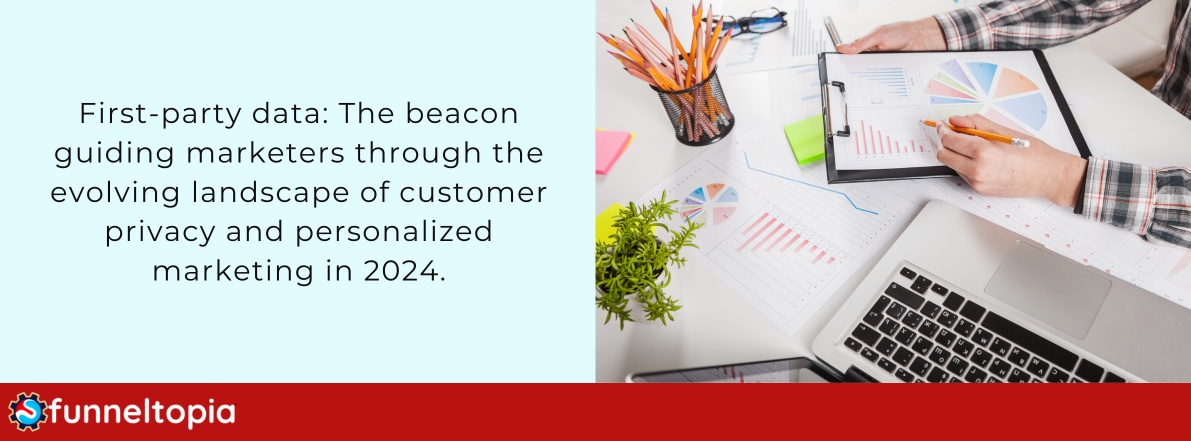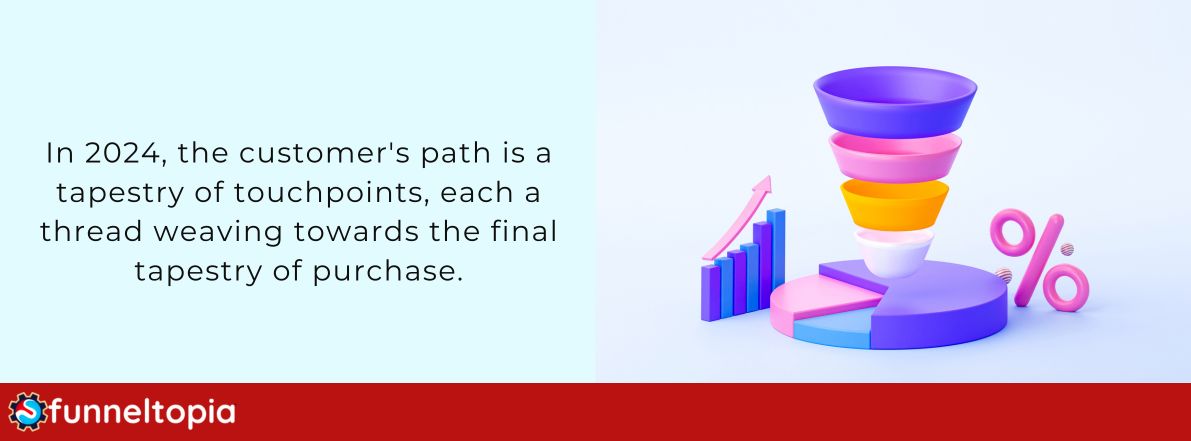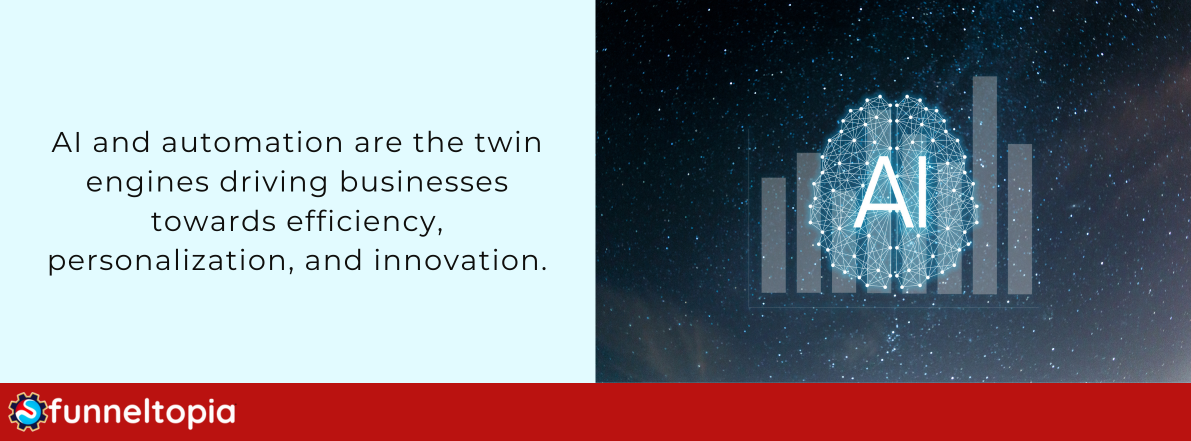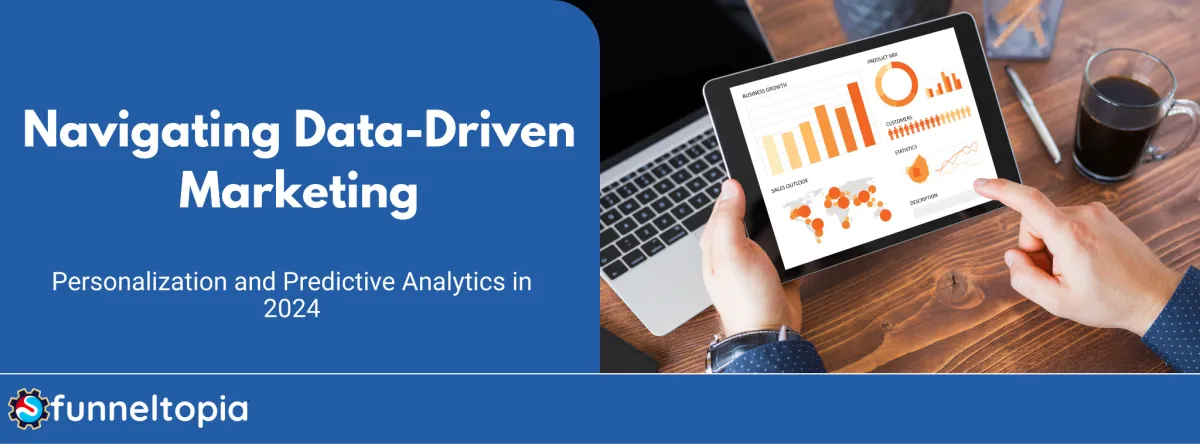Increased Use of First-Party Data
2024 will witness a significant shift in the marketing landscape, with an increased emphasis on the use of first-party data. As privacy concerns grow and regulations around data usage tighten, marketers are turning to the rich insights available from their own customer interactions. This data, collected directly from customers through various touchpoints like websites, social media, and customer feedback, is a treasure trove of information that's both privacy-compliant and highly relevant.
Deep Diving into Customer Insights
First-party data is like a map of your customer's journey with your brand. It tells you what pages they visited on your website, what products they lingered on, how they interacted with your social media posts, and what feedback they provided. This information is crucial for understanding customer preferences and behavior, allowing marketers to create highly targeted and personalized campaigns.
Personalization at Its Best
With first-party data, personalization goes beyond just addressing a customer by their name in an email. It's about tailoring the entire marketing experience to individual preferences and behaviors. For instance, if a customer frequently views a particular type of product on your website, your marketing emails can include similar products or offers.
Building Trust Through Transparency
Using first-party data also helps in building trust with customers. When customers know that their data is being used responsibly and to enhance their own shopping experience, it fosters a sense of transparency and trust. It's a more ethical approach to data usage, aligning with the growing customer demand for privacy and respect in how their information is handled.
Navigating the Post-Cookie Era
As the reliance on third-party cookies dwindles, first-party data is becoming the cornerstone of effective digital marketing. It allows businesses to maintain the effectiveness of their marketing efforts without infringing on user privacy. In this post-cookie era, the ability to leverage first-party data effectively will be a key differentiator for successful marketing strategies.

Multiple Touchpoints in the Buying Journey
The year 2024 marks a shift in how businesses approach the customer buying journey, recognizing that it's no longer a linear path but a complex web of multiple touchpoints. From social media interactions and online reviews to email marketing and in-store experiences, each touchpoint plays a crucial role in shaping the customer's decision-making process.
Understanding the Customer's Path
The buying journey has become more intricate, with customers often interacting with a brand across various platforms before making a purchase. A customer might first encounter your product on social media, then read reviews on a different site, receive an email offer, and finally make the purchase on your website. Each of these interactions contributes to the overall experience and perception of your brand.
Integrating Touchpoints for a Cohesive Strategy
The challenge for marketers in 2024 is to integrate these touchpoints into a cohesive strategy. This means ensuring that the message and experience are consistent across all platforms. It's about creating a seamless journey for the customer, where each step feels connected to the next, building a narrative that guides them towards a purchase.
Leveraging Data for Insights
With multiple touchpoints comes an abundance of data. Smart businesses are using this data to gain insights into customer behavior, preferences, and pain points. This information is invaluable for refining marketing strategies, personalizing customer interactions, and ultimately, driving conversions.
The Future of the Buying Journey
As we look towards the future, understanding and optimizing these multiple touchpoints will become increasingly important. Brands that can create a harmonious and engaging journey across all customer interactions will stand out in a crowded marketplace.

Higher Expectations for Personalization
In 2023, personalization in marketing has moved beyond a mere trend to become a customer expectation. Today's consumers don't just appreciate personalized experiences; they demand them. This shift is driven by the increasing desire for experiences that resonate personally and a growing aversion to generic, one-size-fits-all approaches.
Tailoring Experiences to Individual Preferences
Modern customers expect brands to understand their unique preferences and cater to them. Whether it's personalized product recommendations on an e-commerce site or customized email content based on past interactions, these tailored experiences make customers feel understood and valued.
The Role of Advanced Analytics
The rise in personalization has been facilitated by advancements in analytics and AI. Businesses can now analyze customer data more deeply and accurately, enabling them to predict preferences and tailor their marketing strategies accordingly. This data-driven approach allows for a level of personalization that was previously unattainable.
Building Deeper Customer Relationships
Personalization is more than a marketing tactic; it's a means to build deeper, more meaningful relationships with customers. When customers see that a brand pays attention to their specific needs and preferences, it fosters a sense of loyalty and trust. This connection is invaluable for long-term customer retention and advocacy.
The Future of Marketing Personalization
As we look forward, the bar for personalization is only set to rise higher. Customers will continue to seek experiences that are not just personalized but also authentic and empathetic. The challenge for marketers is to leverage technology and data in a way that genuinely enhances the customer experience, without overstepping into invasiveness or insincerity.

The Decline of Brand Loyalty
2024 will witness a notable trend in consumer behavior: the decline of traditional brand loyalty. In an era of abundant choices and easy access to information, customers are becoming less attached to brands and more open to exploring alternatives. This shift presents both a challenge and an opportunity for marketers.
Fickle Consumer Preferences
Today's consumers are more informed and empowered than ever. With a few clicks, they can compare products, read reviews, and seek the best deals. This easy access to information makes them less likely to stick to one brand, especially if they perceive a better value or experience elsewhere.
Responding to the Loyalty Challenge
For businesses, this decline in brand loyalty means a greater emphasis on continually proving their value to customers. It's no longer enough to rely on past reputation; brands must consistently deliver exceptional products, services, and customer experiences. They need to engage customers continuously, offering new and compelling reasons to stay loyal.
Personalization and Experience as Key Drivers
To counter the waning brand loyalty, companies are focusing more on personalized experiences and building emotional connections. Personalization, as discussed earlier, plays a vital role here, making customers feel seen and valued. Additionally, creating memorable experiences, whether through unique products, exceptional service, or engaging marketing campaigns, can foster a stronger emotional connection with the brand.

Integration of Data Tools in Marketing
2024 will mark a significant milestone in data-driven marketing, with a heightened focus on integrating various data tools. This integration is central to crafting more effective, informed marketing strategies.
Unifying Data for a Comprehensive View
The integration of data tools means combining data from different sources – social media analytics, CRM data, customer feedback, web analytics, and more – into a unified system. This comprehensive view allows marketers to see the complete picture, understanding customer behavior and preferences more holistically.
Enhanced Decision Making with Integrated Tools
With all data points connected, marketers can make more accurate and timely decisions. They can identify trends, track campaign performance, and adjust strategies in real-time. This agility is key in a fast-paced market where consumer preferences can shift quickly.
Personalized Marketing at Scale
The unified data also enables personalization at scale. Marketers can segment audiences more precisely and tailor campaigns to individual preferences. This level of personalization was once a daunting task, but with integrated data tools, it becomes manageable and efficient.
Preparing for a Data-Centric Future
As we look ahead, the importance of integrated data tools in marketing is only set to grow. Marketers will continue to leverage these tools to stay ahead of trends, innovate in their strategies, and create more meaningful connections with their customers.

Importance of AI and Marketing Automation
In 2024, AI and marketing automation will not just be buzzwords; they are essential components of a successful marketing strategy. The integration of AI in marketing tools has revolutionized the way businesses approach their marketing efforts.
AI-Powered Insights for Better Strategies
AI algorithms are capable of processing vast amounts of data, providing insights that were previously inaccessible. These insights enable marketers to understand customer behaviors and preferences more deeply, leading to more effective and targeted marketing strategies.
Automating Repetitive Tasks for Efficiency
Marketing automation tools are taking over repetitive and time-consuming tasks, such as email campaign management and social media posting. This automation frees up marketers to focus on more creative and strategic aspects of their roles, improving overall productivity and efficiency.
Enhancing Personalization with AI
AI plays a crucial role in personalizing marketing efforts. From customized email content to targeted ads, AI-driven personalization ensures that marketing messages are relevant and resonate with each individual customer, enhancing engagement and conversion rates.
Staying Ahead in a Competitive Market
With the marketing landscape continually evolving, AI and marketing automation tools provide businesses with the agility to adapt quickly. These technologies are indispensable for staying competitive, allowing marketers to leverage the latest trends and technologies to maintain a strong market presence.

Conclusion: Navigating the Future of Data-Driven Marketing
As we conclude our exploration of data-driven marketing trends for 2024, it’s clear that the landscape is rapidly evolving. The rise of first-party data, the significance of multiple touchpoints, the decline in brand loyalty, the integration of data tools, and the indispensability of AI and marketing automation are reshaping how we connect with customers. These trends underscore the need for businesses to be adaptable, data-savvy, and customer-centric. Embracing these changes will be key to crafting effective marketing strategies that resonate in an increasingly complex and competitive digital world.







